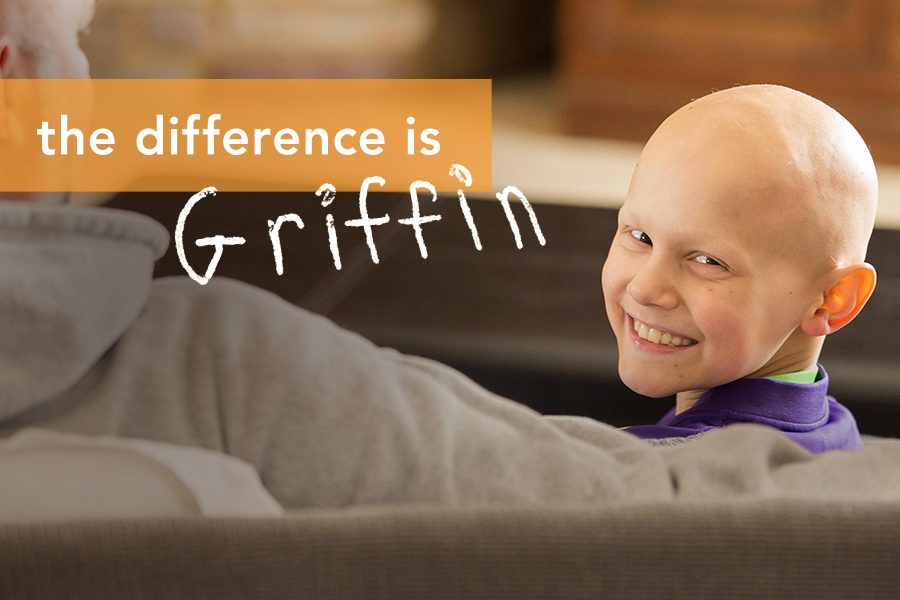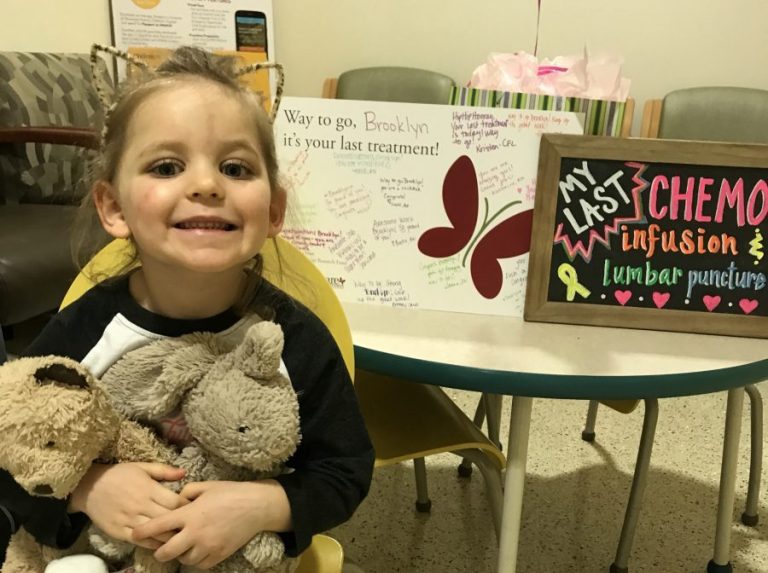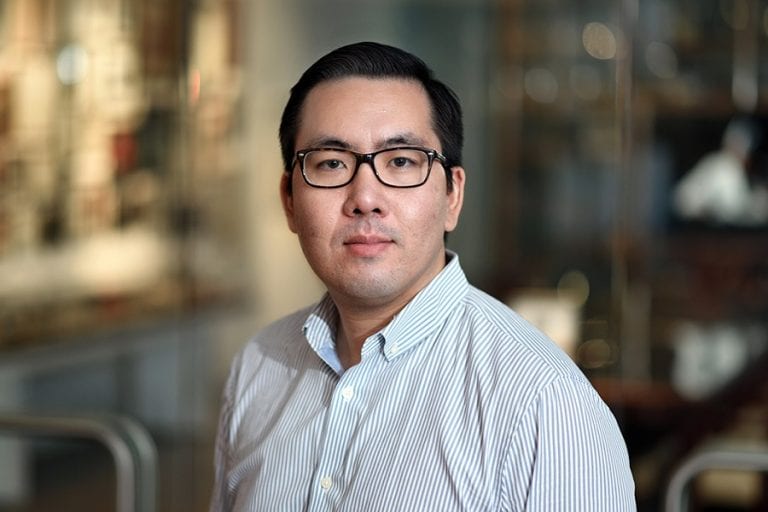Every time Jill arrived at the hospital for her then 8-year-old son Griffin’s chemotherapy treatment, she put signs on the hospital room walls. One above Griffin’s bed and his IV pole said “Griffin Strong.” It’s a motto that Griffin‘s family carries with them since his Ewing sarcoma diagnosis.
In the winter of 2015, Griffin packed up his signs for the last time. After over a year of chemotherapy treatments, surgery on his pelvis, high fevers and infections, his scans have consistently come back with no evidence of disease.
Thanks to research funded by supporters like you, more kids could have better outcomes like Griffin. The survival rate for Ewing sarcoma hasn’t budged in 20 years, and for children diagnosed after the bone cancer has spread, the survival rate is less than 30 percent. Today, scientists are studying the genetic make-up of Ewing sarcoma so they can work toward detecting the disease early-on.
When Griffin limped and grabbed at his thigh constantly, Jill and Griffin’s father, Kurt, knew something was wrong with their sports-loving, athletic child. Then, one February night, Griffin’s pain became agonizing.
After seven hours of countless scans and X-rays at the doctor’s office, Kurt received a devastating phone call: A baseball-sized tumor was embedded in Griffin’s pelvis. Jill remembers Kurt pointing at Griffin and shaking his head as he was on the phone with the doctor.
“He didn’t even need to say anything,” says Jill. “I just knew. Nothing [was] going to be the same.”
A CT scan and a biopsy confirmed that the mass was Ewing sarcoma, a type of bone cancer that occurs most often in and around the bones. Griffin immediately began treatment.
Part of Griffin’s treatment protocol involved chemotherapy infusions of six types of drugs, one being a trial treatment. Each treatment session for Griffin started with a terrifying needle insertion in his chest to access his port. The first time that the nurses accessed his port, it took nearly an hour because he was so afraid of the needles.
Then, during the first twelve weeks of chemotherapy treatments, Griffin started to see his hair on his pillow.
“He loved his hair,” says Jill. “He used to rock a side sweep… I had to talk him into shaving his head.”
Along with a shaved head, Griffin has a scar across his side from the surgery to remove the tumor after the chemotherapy shrunk it to about the size of a stick of gum. This was hopeful news for Griffin’s family, as doctors initially thought Griffin would need an amputation to fully remove the tumor.
“Childhood cancer works overtime to destroy families. It does to children what even strong adults crumble beneath,” says Jill.
Today, Griffin has had consistently clean scans, but has to go back every few months to make sure the cancer has not returned. The anxiety of cancer returning floods back when Griffin goes back to the hospital for scans.
He says God, his mom, and his dad help him to be brave, along with his nurses, who have helped him master his port accesses.
Griffin has some advice for other kids going through cancer just like him. True to the motto he has kept with him through it all, he says, “Stay strong. You can do it.”
Your support is helping scientists move Ewing sarcoma research in a lifesaving direction, but they still need to find out more about the disease so they can create less toxic, safer treatments.
You can make a difference today.
Share Tanner’s story and help build awareness.




